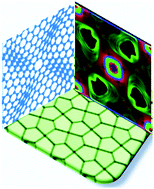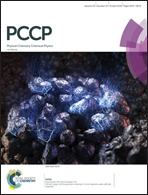2D carbon sheets with negative Gaussian curvature assembled from pentagonal carbon nanoflakes†
Abstract
Despite the good progress made in materials fabrication, it remains a big challenge to synthesize 2D sheets by assembling nanoflakes that are usually produced in experiments, and few theoretical studies have explored this topic. Based on the recent experimental synthesis of pentagonal graphene nanoflakes and the novel properties of penta-graphene, we report a series of 2D assembled carbon allotropes (CG568-80, CG568-180 and CG568-320) that have the following unusual properties: different from most other 2D carbon allotropes, the assembled carbon sheets have negative Gaussian curvatures, and exhibit ultra-softness and better chemical reactivity due to the curvature-induced misalignment of π-orbitals as compared with pristine graphene; all three studied carbon sheets are highly stable with binding energies comparable to those of phagraphene and ψ-graphene, and are semiconductors with tunable band gaps, displaying size-dependent carrier mobilities: ∼105 cm2 V−1 s−1 (CG568-80 and CG568-320) and ∼104 cm2 V−1 s−1 (CG568-180). These features indicate that assembling nanoflakes can effectively tune the structural morphology and properties to expand the family of 2D carbon materials for future applications.

- This article is part of the themed collection: 2018 PCCP HOT Articles


 Please wait while we load your content...
Please wait while we load your content...